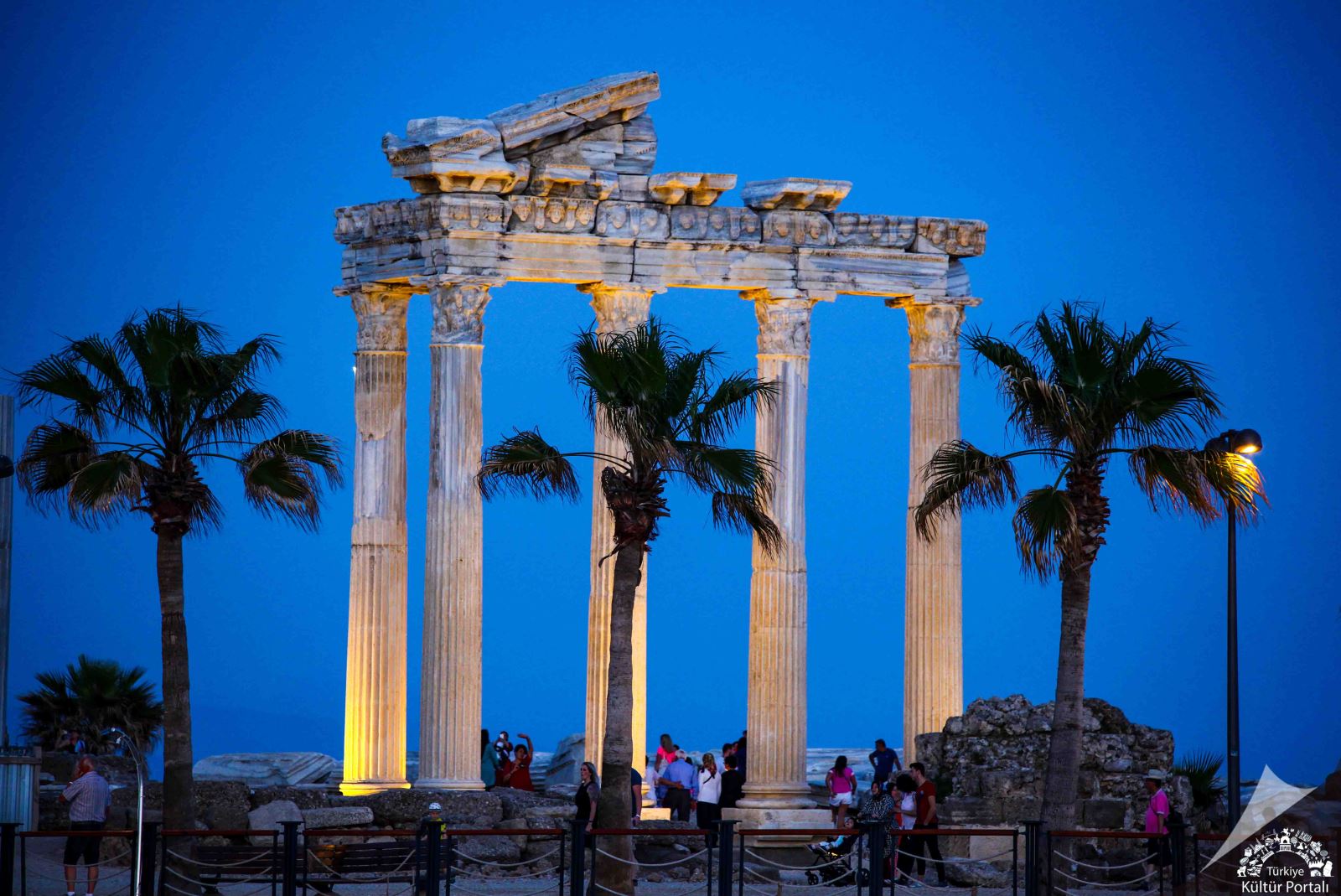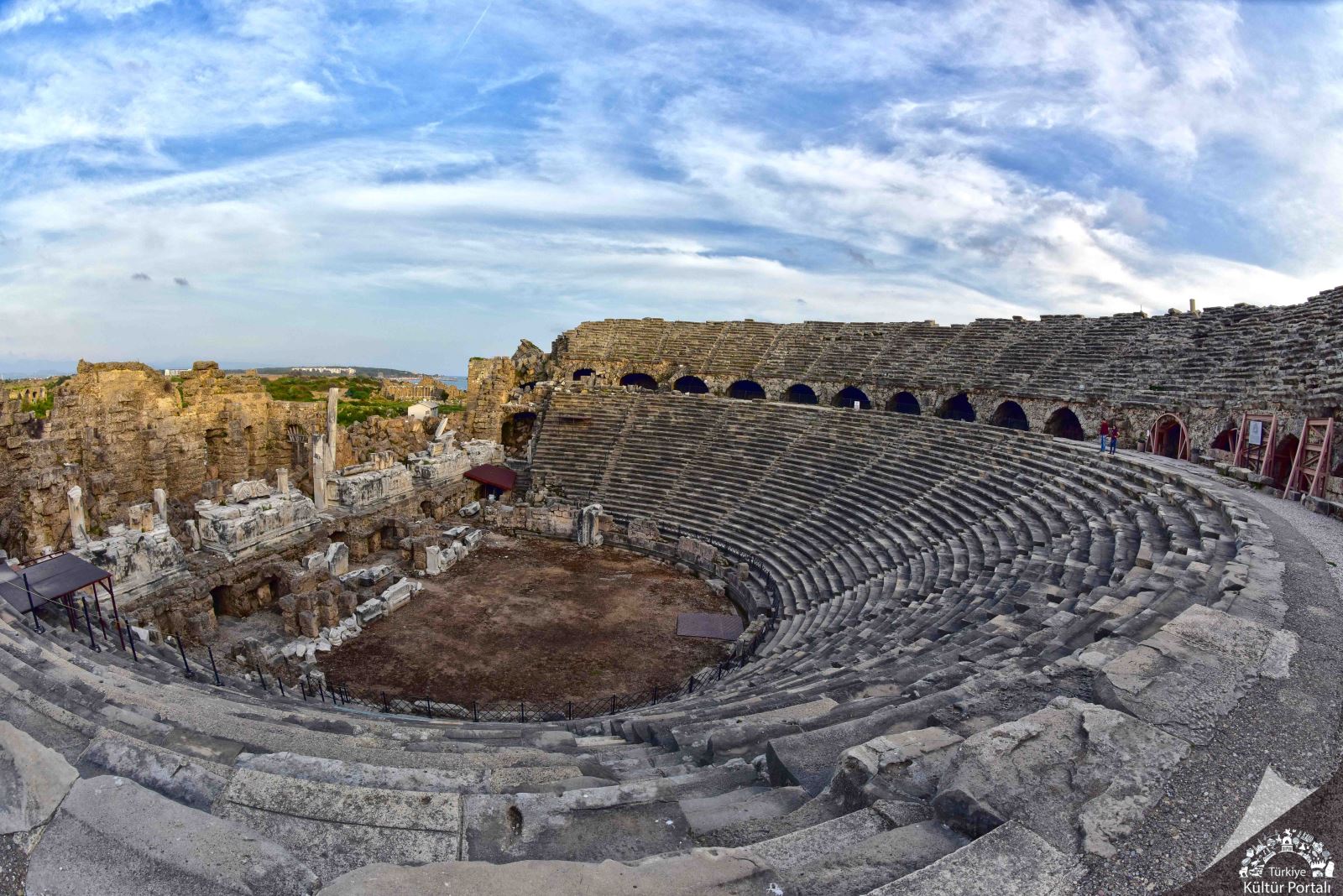Side Ancient City is one of the most significant port cities of the Ancient Pamphylia Region, located within the Manavgat district of Antalya, Türkiye. Founded in the 7th century BCE, the city was continuously inhabited during the Hellenistic, Roman, and Byzantine periods. It became an important center for trade, culture, and economy, particularly during the Roman Empire. Situated on a peninsula surrounded by city walls, Side is home to numerous monumental structures, including a theater, temples, an agora, baths, and colonnaded streets. Today, archaeological excavations are ongoing, and Side Ancient City is an open-air museum accessible to visitors.

(Side Ancient City - Türkiye Kültür Portalı)
History
Founded as a settlement in the 7th century BCE, Side came under the rule of the Lydian Kingdom in the 6th century BCE, followed by Persian control. In 334 BCE, during Alexander the Great’s campaign in Anatolia, the city surrendered without resistance. Throughout the Hellenistic period, it changed hands between the Ptolemies and the Seleucids before being annexed to the Kingdom of Pergamon in 188 BCE following the Treaty of Apamea.
As an independent port city, Side maintained its economic and cultural development until the 1st century BCE, when pirate activity increased along the Pamphylian coast. In 78 BCE, the Roman consul Publius Servilius cleared the region of pirates, bringing Side under Roman rule. In 25 BCE, during Augustus' reign, Pamphylia became a province directly governed by Rome.
During the Roman period, especially in the 2nd and 3rd centuries CE, Side flourished both economically and culturally. Numerous monumental structures were built, including theaters, temples, baths, and public buildings. By the 4th century CE, Christianity began to influence the city, and it gradually became a Christian settlement. During the Byzantine period, Side became the Metropolitan center of Eastern Pamphylia but declined in the 9th and 10th centuries due to Arab raids, eventually being abandoned. By the 12th century, the Arab geographer Idrisi referred to Side as "Burnt Antalya". In the early 21st century, the village of Selimiye was established over the ancient ruins by Cretan immigrants.
Architecture and Urban Structure
Like other Pamphylian cities, Side Ancient City was structured around monumental streets. The main street begins at the city’s northeastern gate, passes in front of the theater, and extends toward the harbor. This street is flanked by colonnaded porticoes with Corinthian capitals, with shops located behind them.
Key structures in the city include:
- Side Ancient Theater: While its design follows Hellenistic planning, its construction technique reflects Roman architecture. Located on the narrowest part of the peninsula, its lower seating rows are built against the slope, while the upper sections are supported by a vaulted substructure. The stage building has three levels.
- Temples of Apollo and Athena: Built during the Roman period, these temples were dedicated to Side's chief deities. They are located at the entrance of the ancient harbor.
- Agora and Agora Bath: The agora was the center of commerce and social life, featuring a large open square surrounded by various structures. The Agora Bath is now used as the Side Museum.
- Waterways and Fountains: The city's aqueducts, built using Roman engineering techniques, supplied water to Side. One of the largest fountains, the Nymphaeum, is located near the main entrance gate.
- Colonnaded Streets: The main streets of the city were lined with columned galleries, which housed commercial and social spaces.

(Side Ancient Theater - Türkiye Kültür Portalı)
Archaeological Excavations
Excavations in Side Ancient City began in 1947, led by Prof. Dr. Arif Müfid Mansel, and were later continued by Prof. Dr. Jale İnan, Türkiye’s first female archaeologist. Today, excavations are directed by Prof. Dr. Feriştah Alanyalı, the head of the Side excavations. These efforts have uncovered temples, baths, fountains, and sarcophagi, as well as the remains of a large sacred council hall. In recent years, eight life-sized statues have been unearthed, and inscriptions revealing the construction of a banquet hall have been discovered. The northern part of the city remains buried under sand.
Current Status
Side Ancient City is an open-air archaeological site and remains open to visitors. Excavation and restoration efforts continue, with artifacts from the site displayed at the Side Museum.
Visitor Information
- Opening Time: 08:00
- Closing Time: 17:00
- Ticket Office Closes At: 16:30
- Closed Days: Open every day


